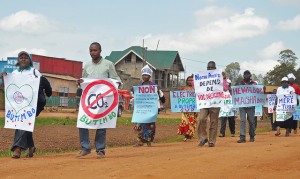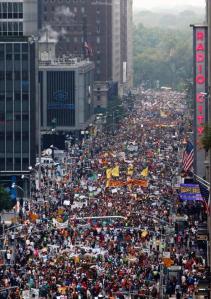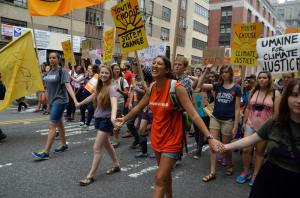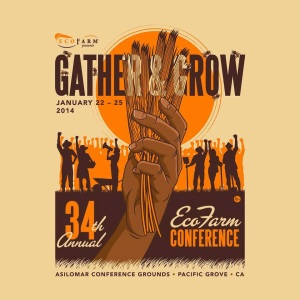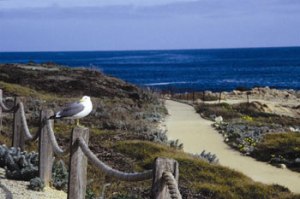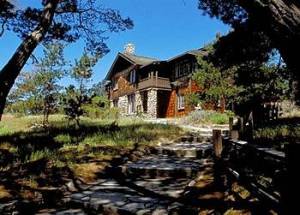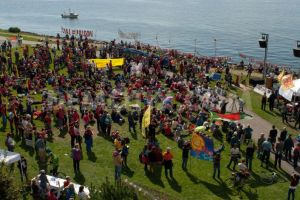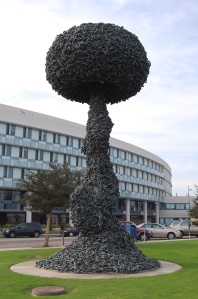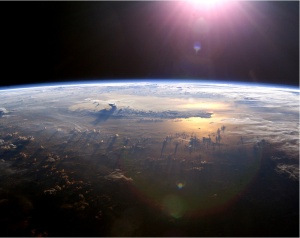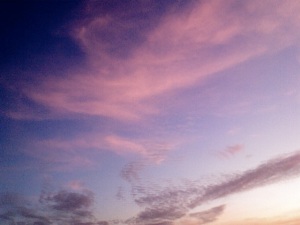It took no more than a minute, perhaps because nearly three years of thoughtful work, education and advocacy made it so obvious, that on Tuesday, April 9, 2013, the Santa Monica City Council unanimously, 7 – 0, enacted into law the Sustainability Bill of Rights (SBR). The ordinance recognizes the rights of Nature and community rights as fundamental and inalienable, superseding corporate interests. Accordingly, “Natural communities and ecosystems possess fundamental and inalienable rights to exist and flourish in the City Of Santa Monica.” The law challenges the legal status of nature as merely property and empowers the City or residents to bring actions on behalf of local ecosystems.
Significantly, this new law codifies “that corporate entities, and their directors and managers, do not enjoy special privileges or powers under the law that subordinate the community’s rights to their private interests.” Commercial corporate interests shall not violate the community’s rights for a sustainable future nor treat the natural ecosystem as property for short-term profit.
The ordinance reflects a momentous, ecologically conscious act of local self-government. It was sparked by the absurd and destructive Citizens United v. Federal Election Commission Supreme Court 2010 ruling that unleashed unlimited corporate or union funds in United States elections, equating spending money with the people’s protected free speech.
The city’s Task Force on the Environment foresaw a flurry of potential election spending by polluters jeopardizing natural environment protections. Biologist Mark Gold, task force chairman, brought forth ideas he was considering with environmental lawyers about a legal paradigm shift regarding Nature and its relationship to human beings.
Linda Sheehan, the Earth Law Center’s Executive Director and Shannon Biggs, Global Exchange’s rights-based organizer, partnered with the task force, along with residents who convened Santa Monica Neighbors Unite! to promote understanding and passage of the SBR. Thomas Linzey, co-founder of the Community Environmental Legal Defense Fund, lent early support, and his colleagues brought the Democracy School to town. Santa Monica City Attorney, Marsha Moutrie, spent months studying and grappling with bold possibilities and developed the legal language with Gold and Sheehan. Dean Kubani and Shannon Parry, leaders from the city’s Office of Sustainability and Environment added to the deliberations with care.
The community really stepped up engaged in local meetings at homes or at neighborhood associations, workshops and town halls. Santa Monica College and Santa Monica High School student leaders endorsed the SBR right away and immediately joined SM Neighbors Unite!, energizing gatherings and so inspiring the city council. SMC’s Associated Students Presidents Harrison Wills and Parker Jean and SaMoHi Solar Alliance 2011 – 2012 co-presidents Charlotte Biren and Jenna Perelman, along with the school’s Team Marine, have proven invaluable as dedicated environmentalists with vivid imagination, joy and understanding.
On January 24, 2012, where the city council resolved to move forward with the SBR, the mighty voices of youth particularly heralded the profound meaning of this bold ordinance.
Some might argue that the SBR needs to be stronger by denying U.S. Constitutional protections of corporate personhood rights or of the Commerce Clause that favor corporations over community interests. True, but the SBR advances our natural world’s protections in ways that energize our struggle to hold sacred Mother Earth, safeguarding her, ourselves and our community rights.
The reality is that when we recognize the rights of Nature, we really deepen and strengthen our human rights. Our biological existence—synapse, heartbeat and breath—is entwined so delicately with the elements and energy of Earth’s biosphere and natural ecosystems that embrace, comprise and nourish us. Mother Earth brings life to our metaphysical being. In the material world, our natural being bears our souls.
Realizing the vitality of Nature verifies the vividness and vulnerability of our own lives. Where would we be without Nature? Such a simple question can unearth a bounty of lush understandings or tremulous uncertainties. Where would we be without Nature?
Marianne Simon, a community member, serenely voiced an eloquent answer that deeply moved us at the March 12 council meeting’s first reading of the Sustainability Bill of Rights ordinance. Listen to her and others there:
We are a living breathing planet over 4 billion years old. As humans we showed up some few thousand years ago, and have the illusion that we control things. But the way we’ve done things up to this point has not always been for the greater good.
And as our development increases exponentially around the world, we have to look at our approach through different eyes.
The earth was here before us, and at this rate, she will be here after us. No matter how much we eviscerate, level, dam or channel, it is just a matter of time, before things revert. But the question becomes at what point in our process do we, as a species, become at risk?
How much water do we have to taint, before there is none left to drink? How many mountains do we have to level before we drown in our own avalanche of sludge. How many oceans do we poison, before we ourselves have nothing to ingest but those self same poisons. How many species, varieties do we destroy before we find ourselves vulnerable to a devastating virus, bacteria or wilt.? All the money in the world won’t save us.
Ask a 5 year old and they will tell you the answer. How can such an intelligent race be so stupid in their shortsightedness about our future.
It is long overdue that the earth have a seat at the table in the decisions we make. In how we utilize our resources in a sustainable manner, in how we can grow and support future generations of not just human beings, but all living things.
It is long overdue that this bill become the standard by which we guide ourselves and our impact on the planet.”
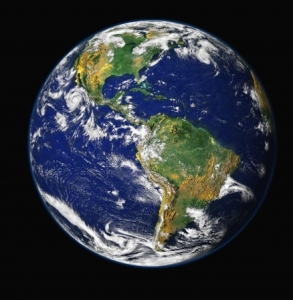 Obviously, every day is Earth Day to anyone who is paying attention to who we really are as creatures of the biosphere. After all, Life and our vitality emerge from the quality of the waters, air, and land of our blue planet. That’s why celebrating and caring for our natural world is central to the good life. After all, Earth’s health is the root of human health; Nature our true commonwealth of priceless value. That is the joy of Earth Day that can refresh each and every one of us.
Obviously, every day is Earth Day to anyone who is paying attention to who we really are as creatures of the biosphere. After all, Life and our vitality emerge from the quality of the waters, air, and land of our blue planet. That’s why celebrating and caring for our natural world is central to the good life. After all, Earth’s health is the root of human health; Nature our true commonwealth of priceless value. That is the joy of Earth Day that can refresh each and every one of us.
